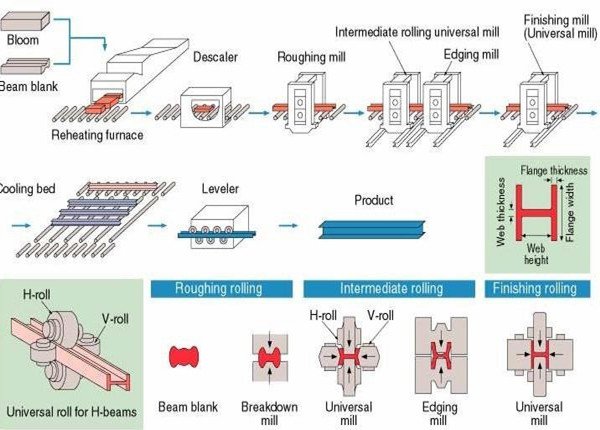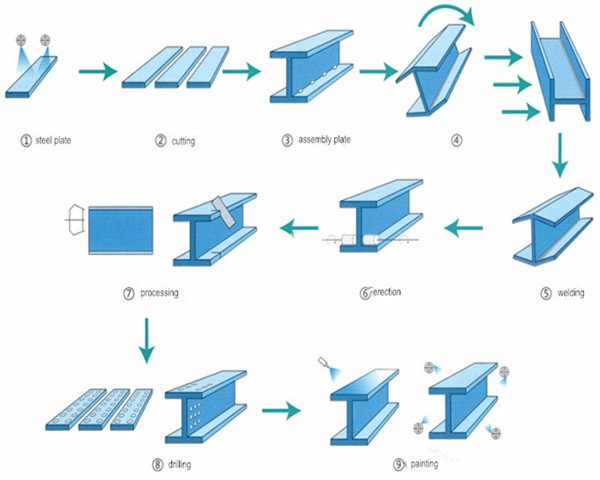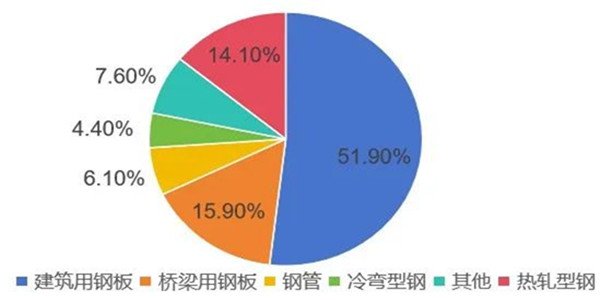"The processing cost of welded steel members increases by about 1000~1500 yuan/ton". In other words, the unit price of hot-rolled H steel is lower than 1000-1500 yuan/ton, however, the application is less than 20%, far lower than 50% approximately of the average level in developed countries.
Why is this happening?
Hot rolled H steel
Hot-rolled H steel was pioneered by Henry Gray to design a method to adjust the thickness of the roll, and was manufactured in Bethlehem in 1908. The reason is that the I-steel was unable to build higher buildings 20 years ago.
Hot-rolled H steel and I-steel look like same but very different.
I-steel | Hot rolled H steel |
The flange changes in thickness, and is thinner than the flange of H-shaped steel, with stronger local stability. | The flange has equal thickness and is parallel to each other, which is wider and thicker than I-steel, with stronger bending resistance. |
Small section, widest flange 180, light weight and very weak torsion resistance. | H-section steel has larger section and heavier weight, which can bear a certain torsional load. |
Mainly used to make elevator, trailer, crane track, etc. | Steel structure building, with a wider range of application. |

Characteristics of Hot-rolled H-type Steel
1. The production process is simple, forming through the rolling machine without welding, saving the consumption of raw materials, energy and labor.
2. The section size and performance are uniform, and the quality is more guaranteed.
3. The section size and plate thickness are limited by the steel rolling machine, which is not flexible enough to meet some special structural design requirements.

Characteristics of the Welded H-type Steel
1. A wide range of specifications, you can choose suitable steel plates for welding according to customer needs, and you can make varieties other than the standard of hot-rolled H-shaped steel.
2. The production process is relatively complex, which requires assembly and welding, which increases the consumption of raw materials, energy and labor.
3. The price of welded H-steel is higher than that of hot rolled H-steel, which is unfavorable to some projects with strict cost control.

Price difference between hot rolling and welding
From the production process flow chart of welded H steel, if hot rolled is used, the first 6 processes can be omitted.
At the same time, the price of steel plate is higher than the finished hot-rolled H-shaped steel. Then considering the processing cost, the difference between the unit price of the two types is about 1500 yuan.
Even the price is cheap, but the application proportion is very low.

From the analysis data of steel consumption varieties in 2022, we can see that:
1. The steel is still dominated by plate, accounting for more than 60%, and the corresponding welding engineering quantity is also huge.
2. The proportion of section steel application is still very low, only 14.1%, and there is still a big gap from the 50% of developed countries.
Problems existing in section steel application
1. Separation between supply and demand, steel structure buildings need more high-strength H-shaped steel and richer product specifications; but the current standard specifications of section steel products are still few.
2. The variety is single, the steel mill only produces basic H-shaped steel, and has not been redevelopment and deep processing, such as the opening section, bolt hole, honeycomb beam, etc.
3. Design habits, structural designers are not familiar with the application of hot rolled H-type steel, limited to "what can be bought in the market", under the quota index of steel volume, they are more willing to choose flexible combination of welded H-type steel.
4. Insufficient promotion efforts: steel mills still lack effective marketing platform and promotion strategy, which is limited to "producing what is the design standard", and do not fully demonstrate the advantages and potential of hot-rolled H-shaped steel in prefabricated steel structure buildings.